The laser is a powerful source of light. It has exceptional features and is capable of covering long distances with little divergence. Based on the unique properties of the laser beam, laser cosmetology emerged. Direction is distinguished by the ability to penetrate into hard-to-reach areas of the body, to control the process of blood circulation, to choose the most appropriate method of exposure, adapting the parameters of the device to the characteristics of the patient's body. The ability to get beautiful skin without cuts and piercings attracts many people. Therefore, rejuvenation and other services involving the manipulation of a high-energy beam are preferred over plastic surgery and "beauty injections".
Types of lasers

To achieve healing and corrective effects, different types of cosmetology lasers are used - it is advisable to immediately ask the cosmetologist what type of installation they use in the office. All varieties are united by the absence of consequences in the form of scars, scars, which often occur after the intervention of aesthetic surgeons.
therethese types of lasers:
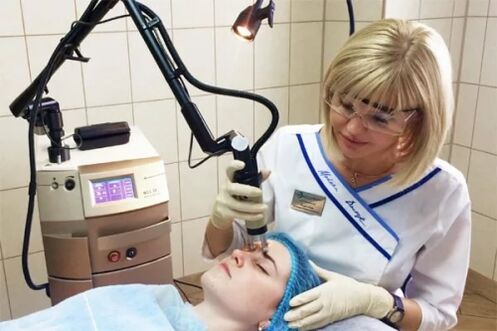
- Erbium. . . Penetrates shallow, eliminates the defect with maximum accuracy. The heat generated energy is dissipated quickly so that nearby tissues are not damaged. Short and fast pulses, combined with the wavelength and density of the emitted wave energy, must be balanced. Only then are side effects excluded from the procedure. With the help of the erbium laser, stretch marks are qualitatively eliminated, tightening and peeling are done.
- Carbon dioxide. . . It has been used in cosmetology and medicine for almost 40 years. Indications for reappearance with this particular type of ray are age spots on the face and body, tattoo removal, permanent low quality makeup, removal of scars after surgeries, past injuries, attempts to eliminate acne itself.
Carbon dioxide laser (second name of the unit) is used to perform dermabrasion - a very serious cosmetic procedure. In case of improper handling of the device, setting of blush options, this leads to irreversible consequences. The device allows you to direct a high-energy dosed beam, adjust and then control the penetration depth. In one session, the beautician processes a large area of skin. Direct indications for the use of carbon dioxide laser are the need to remove papillomas, colloidal scars and the effects of acne. The patient will be able to normalize the skin condition, if it has been problematic before. The beautician will eliminate the enlarged pores, will make the surface of the epithelium even. The advantage of the procedure is a small number of relapses and side effects, a short recovery period. Disadvantages - the rash lasts for a long time in the treatment area (up to 2 months). The phenomenon is accompanied by dilation of capillaries - small blood vessels experience increased stress during the procedure. Allowing the wrong dose of laser beam leads to scarring, weakening or vice versa - an increase in pigmentation.
- ruby. . . This ray is used for epilation. Feature - the procedure can be performed only on light skin. Acting on a tanned or naturally dark skin, you can provoke pigmentation problems, with an even more serious load, a burn will occur.
- Alexandria. . . Generates a long-range beam that distinguishes it from its ruby counterpart. Processing requires constant external cooling of the tissue. Used for exposure to exposed skin, provided there is no sunburn. Hair removal for a person with blonde hair is ineffective and even harmful.
- Diode. . . This type of laser is used for one of the most effective types of hair removal. The penetration depth of the beam is not more than 4 mm. The advantage of the procedure is the lack of damage to the body's natural pigmentation.

Also applyneodymium laser. . . The individual properties of the generated energy flow make it possible to use it for various purposes - from the elimination of permanent low-quality make-up to epilation. In addition to affecting the hair follicle and the skin's natural pigment, the ray affects small blood vessels. Ato mpiksen. Installations of this type are equipped only in specialized clinics; in standard beauty salons, their presence is a fairly rare occurrence.
Indications for laser treatment

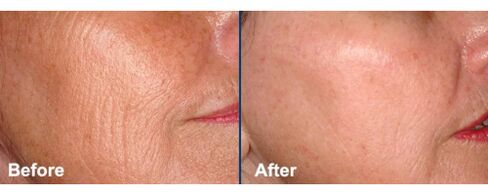
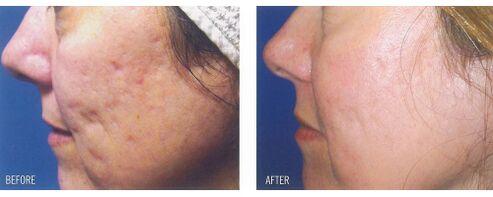
The widespread use of laser in cosmetology is explained by the versatile spectrum of direction. It will be helpful to contact an esthetician and sign up for the procedure for people with such skin problems:
- Acne, the consequences behind them are scars, blue spots.
- Wrinkles are typically mimicked, pronounced age-related.
- Wounds, regardless of their origin, the period of restriction.
- Connecting facial contours.
- Skin laxity, decreased tone.
- Bags under the eyes.
- Hyperpigmentation on the face, body.
- The presence of dark circles under the eyes.
- Low quality tattoo.
- Enlarged pores.
After the treatment, the skin becomes soft, smooth, supple and taut. Defects disappear, due to which the face and body acquire an equal structure. The duration of a procedure depends on the type of laser treatment, the patient's expectations, the amount of work to be done, and the degree of neglect of the existing defect. Sometimes the duration of a session is predetermined by the age of the skin problem.
Choosing a beautician and contraindications to the procedure

Laser correction has been used in cosmetology for a long time. And since the introduction of innovation, experts have decided almost all the features of the body, in the presence of which it is better to refuse the procedure. The limitation is explained by the fact that exposure to a high-energy beam exacerbates the course of pathological processes that are constantly present in the body.
The list of contraindications is completed every month, as no single rejuvenating, corrective effect is worth a person's life - that is the priority. The fact that you have chosen the right beautician (and not a salon, medical center) is evidenced by his desire to gather as much information about your health. A competent physician always specifies absolutely all chronic diseases, and also takes into account those from which the patient has suffered in childhood. Finds out about all the medications taken on a regular or periodic basis. What matters is the tendency to develop allergies, what lifestyle the patient leads, if he has already had a laser correction experience, for what he has led.
Absolutely all factors matter, and if an esthetician simply registers indifferently for a visit to the procedure, he can not be called competent.
Once you have identified at least one contraindication, your doctor will suggest alternative ways to get the expected effect or recommend abandoning the idea of using a laser altogether.
A competent physician will never undertake such procedures after learning that a patient has:
- Low blood clotting (hemophilia, including a family history), a predisposition to thrombosis.
- Diseases of an autoimmune nature - rheumatoid arthritis, systemic lupus erythematosus.
- Inflammatory elements of unknown origin have been found on the skin of the face and body.
- Inflammatory processes and extensive skin lesions - psoriasis, dermatosis, herpes infection.
- Precancerous condition.
- There are many scars on the body (more than 100).
- Sunburns naturally (on the beach, for example) lead to the formation of new moles. They are somewhat darker than the nevi already present or do not differ from their shade.
- Oncological tumors of a benign, malignant nature (localization does not matter).
- Diabetes mellitus, regardless of its type.
- Hypertension.
- Chronic kidney failure.
- Early postoperative period (weak immunity can cause an unpredictable skin reaction to recurrence).
- Severe ischemia.
- Flebeurizmi.
- Psychoemotional instability, the presence of severe mental illness.
- The need to take sulfonamides, antibiotics, hormonal agents, fluoroquinolones, as well as medications that enhance the effect of ultraviolet radiation.
- Tendency to activate colloidal scars.
- Family history of vitiligo.
- Pregnancy, lactation.
The presence of these factors is incompatible with the use of a laser, and all these conditions are united by a common concept - absolute contraindications. If the beautician finds out about their presence, in no case should it be possible to perform the effect with high energy. The procedure can accelerate the course of oncological processes, transfer chronic diseases to an aggravating stage and make the scars a malignant neoplasm.
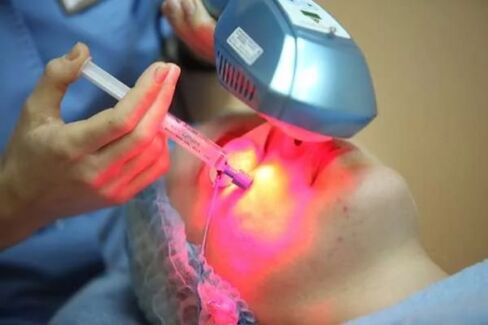
But there are some relative contraindications - most of them are temporary and the cosmetologist just postpones the procedure to another date. These phenomena include:
- Appearance on the affected area of acne, a boil.
- Increased body temperature.
- Respiratory infections.
- Fresh extract.
- Hypertensive crisis on the day of the planned manipulation.
- Menstruation.
- Visit of a chemical (acid) peeling in the last 2 weeks. The skin must be regenerated, otherwise exposure will lead to burns.
It is impossible to characterize laser treatment as a harmless procedure. The ray penetrates the skin, with the power of energy, destroys old cells, eliminates areas of defects. If the body is subject to features, pathologies and is prone to an inadequate reaction to ultraviolet light, the beautician should be warned.
Laser exposure side effects
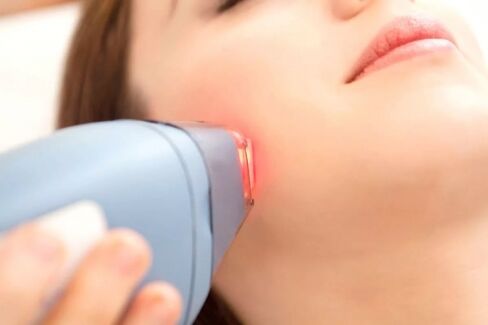
The laser beam is an invention that aims to improve the condition of the image. The procedure is really effective and has already given visible positive effects to many people. But even these statistics can not provide against possible negative results in every subsequent case. Exactly the same treatment for some patients can be a real salvation from scars, acne and wrinkles, while for others it can provoke problems with the body.
All negative results have their root cause - they appear due to the illiteracy of the cosmetologist, the characteristics of the patient's immunity, unwillingness to care for the surface of the already treated skin. The laser beam can cause the following side effects:
- Burns (when the cosmetologist incorrectly chose the laser beam exposure parameters).
- Crust formation is normal for certain types of laser procedures. But the appearance of a crust, which creates pain even with imitation activity, is a pathology.
- Itching due to increased skin sensitivity.
- The rash - normally disappears after 2-3 days, undergoing systematic treatment with a burn medication.
- Tissue pain. The change in texture is the result of incorrect selection of processing parameters.
- Activation of herpes infection is the reaction of the body's immune system to an irritant.
Also, side effects include edema and the development of suffocation of the treated area. But this only happens in the case of a bacterial infection - when the patient rubs, he combs the smooth surface with the laser.
If there are no obstacles to the procedure, laser treatment of the problem area of the skin will be the best option for solving the problem. In the vast majority, it is the beneficial properties of a high-precision beam that are described in the medical literature. Experiencing psychological distress from the realization of external inferiority, thanks to the use of a laser, many people have eliminated aesthetic imperfections and become happy.





















